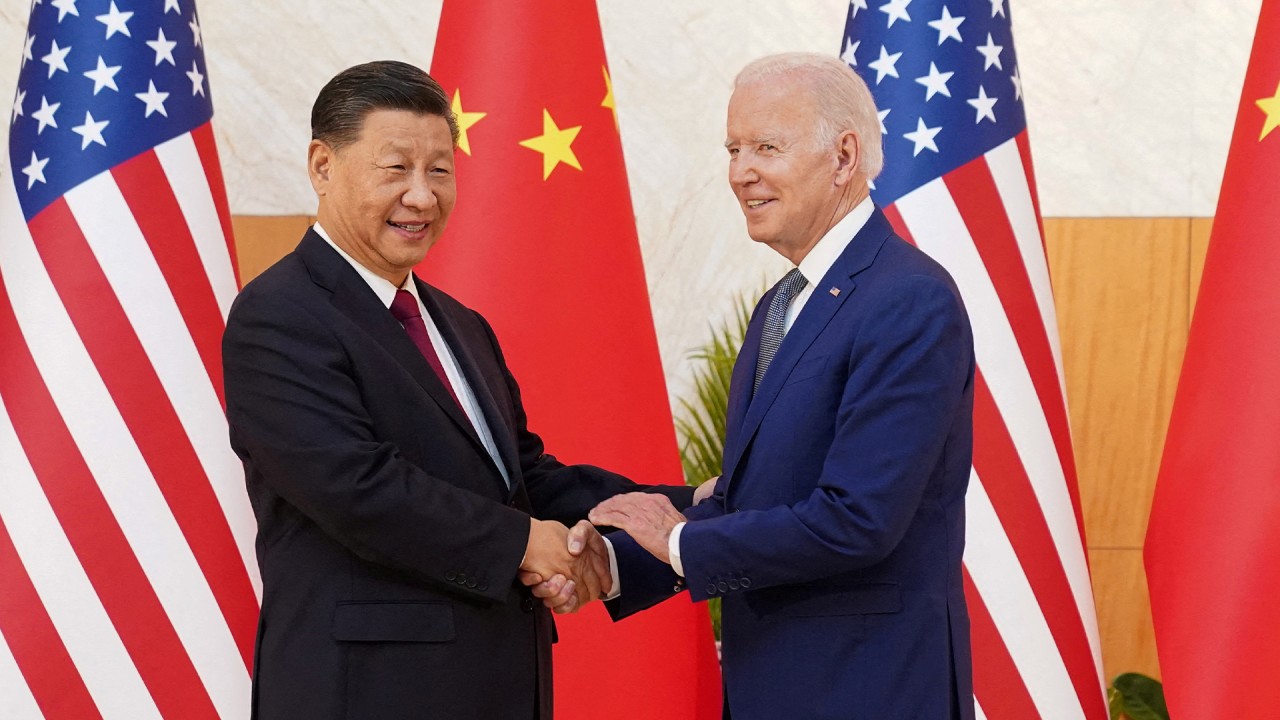
China trade: decade-low import of cotton yarn reflects ‘global slowdown’ in clothing demand
- US-led ban on Xinjiang cotton, zero-Covid restrictions and supply-chain delays also helped drive down China’s cotton-yarn imports during the year’s first three quarters
- Shortfall in China’s yarn imports this year is equal to about 3.5 million bales of cotton lint, and it actually exported yarn to India – an ‘unheard of’ development
Cotton-yarn imports into China plunged this year to their lowest level in a decade, sending exporting countries such as India on a hunt for alternative destinations.
China is the world’s largest importer of cotton yarn from the likes of India, Vietnam, Pakistan and Uzbekistan, as its own spinning mills do not produce enough to feed its apparel and textile industry.
However, the value of China’s cotton-yarn imports declined by 33.2 per cent in the first nine months of this year to US$2.8 billion, from US$4.3 billion in the same period last year, according to its customs data.
And the loss of such a large volume of orders from China reflects a “global slowdown in apparel demand”, according to Manish Daga, managing director at cotton consultancy CottonGuru in India.
Boon or burden? Asian alternatives to Xinjiang cotton find US ban challenging
“The apparel and garments market is not doing well,” Daga said. “That’s why yarn imports by China have reduced significantly.”
In an “unheard of” move this year, China actually exported yarn to India, he said.
“China’s cotton prices are lower than India’s, which has rarely happened before,” Daga noted. “That is the reason yarn is now being imported to India rather than exported from India.”
The shortfall in China’s yarn imports this year is equivalent to 3.5 million bales of cotton lint, according to a report released last week by the United States Department of Agriculture.
The world’s second-largest economy accounts for more than 30 per cent of global apparel exports, and its major buyers are the European Union, US, Japan and Association of Southeast Asian Nations countries.
However, with Russia’s invasion of Ukraine, fuel and raw material prices have increased substantially.
Annual inflation in the European Union was at 10.9 per cent in September, and as costs for garment manufacturers and retailers have increased, consumers are spending less and retail sales have declined across Europe.
China’s domestic apparel sales and cotton-product exports each fell by 5 per cent from January to September, reflecting the declining demand for the country’s apparel, said the US agricultural report.
Why has the US ban on Xinjiang’s tomato exports had such limited effect?
The report also attributed the decline in China’s yarn imports to its stringent zero-Covid policy that has seen multiple cities and districts under lockdowns, disrupting production and denting domestic demand.
“There is uncertainty among manufacturers [in China],” Daga said. “That is why they have lowered consumption [of yarn]. They are not building inventory because they don’t know when lockdowns will be imposed again.”
Foreign trade policies, especially by the US, that bar imports of all products made with Xinjiang cotton, have also played a role, said the report, as brands move to ensure that their supply chains are compliant.
“There has been an increase in orders to the US,” Shahidullah Azim, vice-president of the Bangladesh Garment Manufacturers and Exporters Association, told the Post.
According to Textile Today, an apparel magazine in Bangladesh, the country also saw a 51.5 per cent year-on-year increase in the value of garments exported to the US during the financial year that ended in June.
Preliminary customs figures in Vietnam show that fibre and yarn exports to China in October reached only 51,900 tonnes, down 33.3 per cent over the same period last year, according to the Vietnam Cotton and Spinning Association.
India traditionally exports around 1 million tonnes of yarn every year, of which 60-70 per cent will go to China directly or indirectly, Daga said. However, declining import orders from China have forced Indian exporters to seek substitute markets.
“China was our major buyer, but now … we have started selling more yarn to domestic mills and countries like Bangladesh and markets in Africa and Europe,” said Alkesh Gangani, managing director at cotton yarn exporting company Niva Exports.
‘Barely a boost’: China to buy Xinjiang cotton as US ban hits home for mills
Niva’s sales to China this year have totalled less than half of the 1,000 tonnes ordered last year.
Exporters also pointed to persistent logistics concerns due to China’s zero-Covid policy.
“Oftentimes, our containers are stopped, and there is no reliability,” said Arun Dwivedi, the owner of Charun Enterprise, an Indian exporter of organic cotton. “The transit time is longer.”
Normally it would take 25-35 days, he said, but coronavirus restrictions and a container shortage have made the trip about twice as long.
Dwivedi said that his company shipped 25,000 bales of cotton to China late last year, but this season there have been no exports.
Pointing to the shifting trends in apparel manufacturing, an earlier US Department of Agriculture report from August said: “China’s role as a cotton importer appears to have peaked, while other countries are increasing their share of imports.”
The report projected that, by 2030, Vietnam, Pakistan, Indonesia, Bangladesh and Turkey will together account for 47 per cent of the world’s cotton imports.
China, which accounted for more than 50 per cent of all cotton imports at its peak in 2012-13, saw that figure fall to 26 per cent last year, and it could dip to about 24 per cent by 2030 due to rising production costs and the growing use of synthetic fibres, according to the report.
“The trend also reflects strategic plans espoused by Chinese planners, including ‘high-quality opening’ and [Belt and Road Initiative-type] strategies, which are responses to the changing economics of the industry,” the report added.


